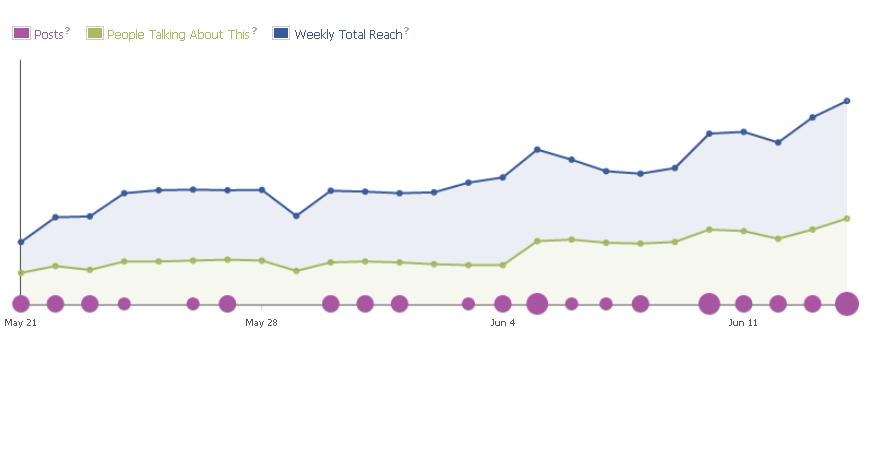
Not so long, long ago, much of marketing was tough to measure.
If you bought an ad in your local newspaper or Yellow Pages, you knew how many physical publications got printed and dropped on people’s doorsteps, but not how many of those recipients actually looked at your ad.
If you bought a booth at a trade show, you could count how many of your tchotchkes disappeared, but you might not know how many ended up in hotel trashcans versus how many went home with your target customers, or even whether someone had nabbed a whole armload when you weren’t looking.
Along comes online and suddenly you can measure so much that you’re literally drowning in data.
This is fantastic news if you’re someone who wants to evaluate the effectiveness of your website, your advertising and your emails, and totally daunting if you get confused by the terminology and overwhelmed by all the numbers.
Because I’m the queen of analogies, let’s think of some commonly used online metrics in terms of bricks and mortar business numbers:
- Visits — how many times did the front door open to your business?
- Unique visits — how many different people walked through your door last month? If a customer goes to his favorite coffee shop every morning, he only gets counted once for the month, the same as someone who buys one cup of coffee and never comes back.
- Page views — within a visit, how many different things did your customer look at? How many aisles did he or she walk down or how many products did he pick up? If one customer picked up 10 different products or picked up one product 10 times, count all 10, no matter what he eventually bought. Total these for all visitors.
- Bounce rate — what percentage of people walked into your business, then walked right back out? Maybe they thought you sold something else or they only wanted to ask what time it is.
- Traffic sources — how did they arrive at your business? Was it a referral from a friend, a Yelp listing or are they regulars who just know how much they like what you do?
- Click throughs — how many people take the action you ask them to, like coming to your Sunday brunch or checking out your new children’s department?
If you were going to measure these kinds of activities in your physical business, you would probably decide some were useful and others were simply not worth the bother. It’s perfectly OK to feel that about your online metrics, too. Just because you can know something doesn’t mean it’s meaningful to know.
Chances are, if I asked you how business has been this year, you wouldn’t tell me how many unique visitors opened your door last month or how many aisles they walked down. You’d probably instinctively think of whether sales were up or down. Are you more or less profitable?
I encourage people to pay attention to the online metrics that matter but to think of them as intermediary data. It’s a go-between that might link you and your customer and lead to a sale.
When you buy a billboard, you can know how many cars drive by that location. When you look around your business, are people packed in there shoulder to shoulder or is it quiet? That’s information about activity that might lead to business, but not necessarily.
But if you put up a billboard and your sales double the next week, that’s real business data. If your store is packed and the cash register keeps ringing, that’s the goal, not just having people hanging out without buying.
That’s why I recommend paying at least as much attention to your business data as your online metrics. It can be tempting to spend all your time analyzing your website traffic instead, because maybe it’s harder to get your business data, but easier data isn’t necessarily more valuable.
If you run a physical business, some examples of real-world key performance indicators you might measure include:
- Average daily revenue
- Total monthly revenue
- Total revenue by department
- Average amount spent per customer
- Average number of items purchased per customer
- Profitability, however you measure it, EBITDA or just what’s in your bank account after paying monthly bills
If you only have time to track one metric, it should be profit. If you’re making three times as many sales as this time last year but your profit is down, you’re moving in the wrong direction.
That’s another reason I’m a fan of regular metrics monitoring. Context matters. If I tell you my SAT score or my Klout rating, is the number meaningful on its own? If I tell you I made $10,000 in sales last month, should you congratulate me because that’s my best month ever or be worried because a typical month is 10 times that?
Yes, you want to consider how many people opened your last email campaign, because it will help you get a sense of whether your email marketing is more likely to drive sales or just waste your time and annoy people. But if you see a trend that every time you send an email your sales double, isn’t that more useful than open rates? If the right people are opening and buying from you, do you care if everyone else hits delete?
Google Analytics offers this 47-minute video overview if you want more help understanding online metrics:
[youtube=http://www.youtube.com/watch?v=l9joLoZOjK4]
Colleen Newvine Tebeau is a former reporter and editor who then earned her MBA at University of Michigan with emphases in marketing and corporate strategy. She is a marketing consultant who helps small and midsized organizations with strategy and tactics, including social media and communications.
Related articles
- 11 Google Analytics Tricks to Use for Your Website (seomoz.org)
- 16 Remarkable Web Analytics Guides, Tips and Techniques (business2community.com)
- Big Data: The Right Data Wins (business2community.com)
- The 5 Social Media Metrics Your CEO Actually Cares About (hubspot.com)
- Twitter Opens Up Tweet Performance Analytics To All, For Free (techcrunch.com)
- Web Analytics and Your Business: Why Analytics Can Help You Succeed (bloggingpro.com)
- Measuring the Impact of Your Content Marketing Strategy: The Pyramid Approach (contentmarketinginstitute.com)
- Meaningful SEO Metrics (seomoz.org)
- 10 Tweetable Takeaways from “Digital Marketing Analytics” (prtini.com)
- Make Data the Centerpiece of Campaigns with Marketing Analytics (business2community.com)


Leave a reply